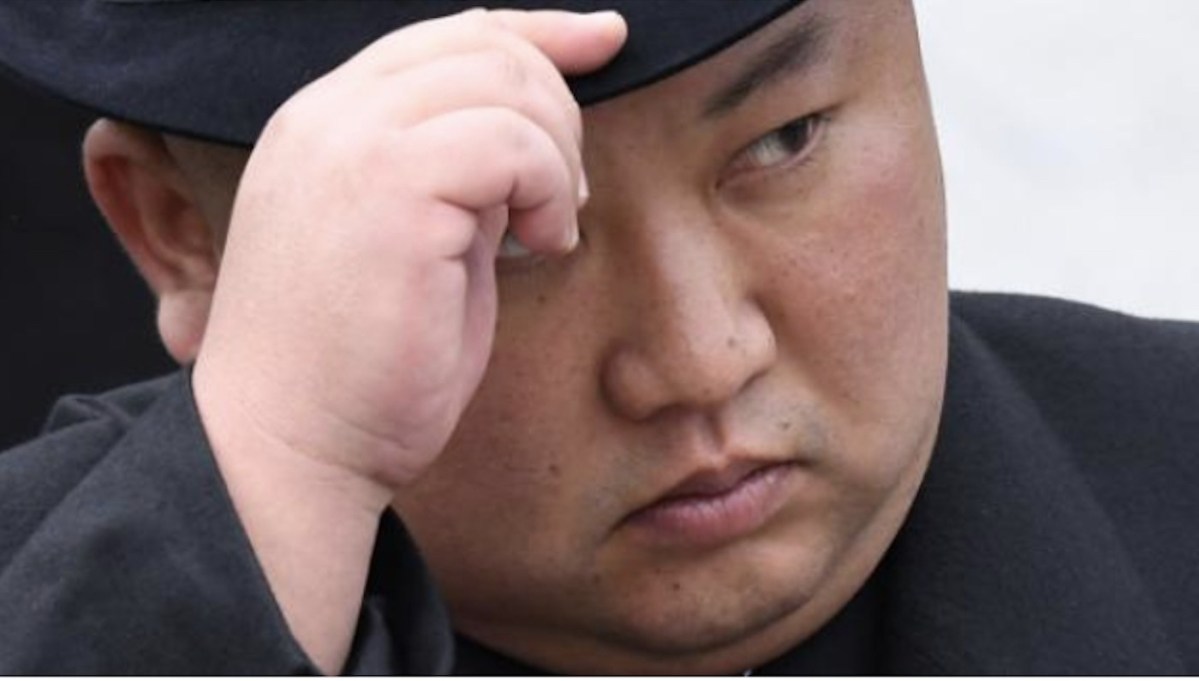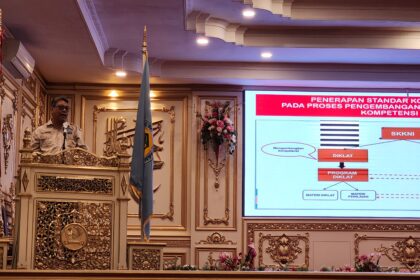[ad_1]
SEOUL – What does the dictator who has everything gift himself? A new job title, apparently.
At a time when economically pummeled North Korea is refraining from such egregious acts as missiles launches or nuclear tests – likely as it awaits the results of the Biden administration’s policy review – the Pyongyangology community has been electrified by Kim Jong Un’s latest rebrand.
In a report last week, North Korea’s Korean Central News Agency called Kim “president†of the State Affairs Commission rather than his customary title of “chairman†of that body.
A typo? Nope.
This week, in a report on Kim’s latest visit to the “Palace of the Sun†just outside Pyongyang – where his father, Kim Jong Il, lies in the state of mummification by which communist leaders achieve immortality – the same media dubbed him “president.â€
Granted, there has been no change in Kim’s title in Korean. The latest change appears restricted to English. So what gives?
“I think it’s just an attempt to imitate changes without really changing anything,†Leonid Petrov, a North Korea watcher and visiting fellow at Australia National University told Asia Times. “If only the English translation is changing, then there will be no domestic policy implications whatsoever.â€
Even so, world leaders – from ex-US President Donald Trump on down – have officially been referring to North Korea’s leader as “Chairman Kim.†Under diplomatic protocols, that may now change.
Externally Kim’s new title offers a clue into the thinking underway in the Pyongyang’s corridors of power about how it wants to world to view the Kimdom. Internally, it comes at a time when Kim is adopting new titles – but has not yet fully enshrined himself among his father and grandfather in the country’s personality cult.
Going full-on Kim
For one thing, the new title could be seen as a bit of a legacy grab.
Kim’s grandfather, the “Great Leader†and state founder Kim Il Sung, used the title “President†and remains (despite passing away in 1994) “Eternal President†of North Korea. His father, the “Dear Leader†Kim Jong Il, used the title “Chairman of the National Defense Commission,†and also retains that title in death as “Eternal Chairman†of that body.
So Kim III appears to have just taken on the title of the revered Kim I. But there is more. It also comes just weeks after Kim adopted the title of “General Secretary of the Korean Workers Party†at the end of January’s 8th Party Congress.
General Secretary was (another) title that had been held by both Kim I and Kim II while living – and is, indeed, still held in perpetuity by Kim II who, in addition to being “Eternal Chairman,†is also “Eternal Secretary General.â€
This suggests that the (living) Kim is making a clean sweep of titles. But few foreigners are going to be familiar with all this nomenclature. The focus of the rebrand looks aimed at the international community.
The consensus of commentary in South Korean media this week was that Kim’s adoption of the title “president†is a tactic to make him appear more normal in the eyes of the global community. While merely optical, the tactic may make some sense.
In the middle of high-tech, globally connected 21st century Northeast Asia, a country that is almost entirely insulated from international contact and commerce, and is led by a third-generation, post-communist, neo-monarch, appears – to put it politely – “quirky†in international eyes.
Beyond this quirkiness, the country also has a threatening mien, given the grim realities of dictatorial governance, highly-militarized ultra-nationalism and a nuclear arsenal.
As a result, Kim – one of the most instantly visually recognizable world leaders – is just about the nearest thing global geopolitics has to a real-life James Bond super villain.
And this is the figure who know bestrides global stages. With Kim having emerged from isolation to engage in international summitry since 2018, there are sound reasons to at least look/sound a wee bit more mainstream.
“Kim is trying to change international perceptions since his great outing in Singapore [with Trump in 2018],†said Go Myung-hyun, a North Korea watcher at Seoul’s Asan Institute. “I think it this is a continuation of that effort.â€
Personally, Kim has been a more open leader than his hermit-like father, who only ever spoke in public once and remained a very distant figure to his citizenry. The son, however, is frequently photographed offering on-the-spot guidance to awed officials, or mugging to the cameras among his adoring public – the same PR tactics Western politicians have been using for decades.
Though he does not disdain the customary tunic at key state events, he also appears in more conventional attire – Western-style suits and natty specs, with smartphone close at hand.
In a broader signal of what might be dubbed “normalcy,†Kim has, so far, declined to physically venerate himself in the ubiquitous statuary, portraiture and lapel pins that epitomize the cult of his Dad and Granddad. (Though there may be a different reason for that – of which more, below).
At home, Kim’s official title has not changed. And informally, in discussions among North Korean, he is still referred to as “The General/The Marshal†– a reference to his background as a graduate of the Kim Il Sung Military Academy.
But overseas, the presidential title brings him into line not just with western counterparts like America’s Joe Biden and South Korea’s Moon Jae-in, but also with the two benchmarks of communist/post-communist states – China’s Xi Jinping and Russia’s Vladimir Putin.
“I think Kim Jong Un is going in the same direction Xi Jingping did with titles,†said Go, “I think he wants to be treated the way the international community treats Xi.â€
Xi is General Secretary of the Chinese Communist Party, Chairman of the Central Military Commission and President of the People’s Republic of China. But though he wears three hats, his most common title overseas is “Chinese President.â€
That leads to the next question. If Kim is not “North Korean President†– what exactly is that body that Kim is president of?
Kim’s ruling machine
It may surprise many to learn that Kim is not – at least, not de jure – the head of the North Korean state. The nominal head of North Korea is Cho Ryong-hae by virtue of the title, “president of the Presidium of the Supreme People’s Assembly.â€
However, nobody is fooled. The Kims have always been de facto, the supreme leaders.
How did/do they rule?
Kim II was the chairman of the National Defense Commission, or NDC – essentially, his own personal brain trust, an entourage of close, trusted officials. Kim III was chairman of, and is now apparently president of, a similar machine with a different brand: the SAC.
 “There is a hint of re-arranging the deckchairs on the Titanic about it,†Chris Green, an assistant professor of Korean studies at Leiden University said of the two bodies.
“It is necessary for Kim to have an institution through which to exercise practical rule and whose head’s title he can adopt,†Green explained to Asia Times. But it “isn’t appropriate to transgress on his father’s legacy – ie the NDC – Green said, as that would violate “legacy politics.†Hence, the rebrand from NDC to SAC.
(As an aside: Asia Times refers to Kim as “leader of North Korea†as that is shorter than using his full title. It is also clearer for readers, as few know what the SAC is.)Â
But beyond the SAC, Kim III has been resurrecting a number of governing bodies and events that lay dormant under his father – such as last month’s high-profile Party Congress. That points to a more consensual, more normalized leadership style by Kim – albeit one that does not undermine his own, actual power.
“I buy the argument that he is trying to wrestle a government used to having been run by strongman whim to one that is somewhat regularized – but keeping his capability for strongman intervention robust,†Lynn Turk, a former US diplomat who dealt with North Korean issues, told Asia Times.
The Kim cult
In a nation that boasts perhaps the most successfully totalitarian socio-political control mechanisms on earth, Kim’s leadership appears stable. Even the most hopeful of overseas conservatives who watch the country have identified no signs of internal opposition, nor of guerilla armies massing in the hills.
Still, Kim’s legitimacy may not set in stone. In a land where state media (there is no other) routinely speaks in strident terms of “revolutionary struggles†and “arduous marches,†Kim III has not yet mastered a major crisis.
Kim I initiated the apocalyptic Korean War of 1950-53, during which his forces failed to conquer/absorb South Korea and were unable to prevent US bombers levelling their country. Kim II took the helm at a time when the economy was plummeting, hundreds of thousands were dying of famines and forecasts of regime collapse were rampant.
Yet both managed to navigate their country through those traumas. Kim III is on less firm footing as North Korea’s ongoing crisis has not yet been successfully managed.
In 2018-19 he expended significant political capital on global summitry – but won no substantial return. Since early 2020, North Korea has been mired in what may be its most severe economic crisis since the 1990s. This is due to a triple whammy of Covid-related border closures, global sanctions and last year’s natural disasters.
This may be why the current Kim is not ready to insert himself into the personality cult between Dad and Granddad.
“I think Kim lll knows that his populace knows there is no basis for mythologizing him like there was for Kim I, and Kim ll,†said Turk. “So he is stuck with legacy, a diminishing asset, and performance for his legitimacy.â€
But don’t divest those North Korean statue-maker stocks just yet.
“I wouldn’t expect Kim to enshrine himself in a personality cult for the general public yet. It would come off as arrogant and haughty, not the actions of a man of the people,†said Green. “That being said, they teach ‘Kim Jong Un Revolutionary History’ in schools, and inside the party the personality cult is immense, so we can see the direction of travel.â€
[ad_2]
Source link










